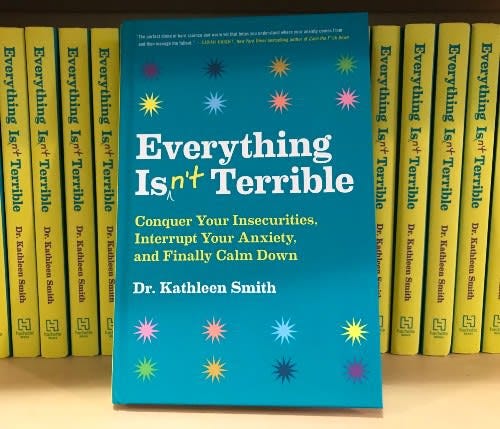Seeing Patterns Instead of Personalities
How labels are hurting your relationships

My toddler daughter loves to press her face against translucent Tupperware lids. Suddenly the whole world becomes red or blue. Everything is the same, but different.
I think anxiety works in a similar fashion. Anxiety is a lens through which we see the world, and our families. But an anxious focus on those we love limits our ability to see reality—all the colors, complexity, and capability of others.
As a therapist, I try to pay attention to the adjectives that people use to describe their family members. Words like critical, lazy, sensitive, emotional, toxic, or overbearing are commonly deployed. I try to challenge people to consider what gets lost when we view people through the lens of an adjective. When we say to ourselves (and our therapist), “That’s just the way they are.”
One of the great things about Bowen theory is that it looks at the relationship system as the emotional unit, not the individual. It challenges people to look at patterns in relationships and to observe the part we play in them. And by changing our part in the relationship dance, we begin to free the other person from the prison of adjectives. From the assumption that their personality, and their functioning, is static.
What limiting definitions do you use for the people you love? Here are some examples:
They are very sensitive.
He refuses to help.
She never listens.
He’s just like his father.
He can’t take care of himself.
She’s a worrier.
She’s the bossy one.
They are so stubborn.
When we treat people as if these statements are true, we reinforce the behaviors that produce these statements in the first place. Treat a child like they’re very sensitive, and they tend to become more sensitive. Hide the truth from your worrying parents, and they’ll probably worry even more. We don’t cause these behaviors in others. They’re not our fault. But you do have to ask yourself, “What’s my part in all this?”
Think about the family in which you grew up. Were there labels thrown on you? Were you identified as the anxious one, or the person who needed extra help? The one who was most likely to succeed, or the one who loved attention? How were these labels roadblocks to growing up? Maybe they kept you focused on overachieving instead of pursuing your real interests. Maybe they taught you that your own thinking couldn’t be trusted, or that you were only comfortable if you were in charge.
Shifting from an individual focus to a relationship focus means shaking off the labels that have been put on ourselves and others. It looks like seeing the patterns in our relationships, and recognizing that EVERYONE is responsible for themselves and their part.
This week I challenge you to think about the labels you put on those you love. What would it look like to take off your anxiety-colored glasses and see patterns instead of personalities? What would it take to put the focus on your own responses, and try something different than the same predictable pattern? This could look like:
Not automatically overfunctioning for someone.
Not assuming a person can’t do something.
Not assuming a person can’t handle your thinking.
Not acting helpless when you’re perfectly capable.
Not complaining about them to others.
Here are some questions you can ask yourself:
What labels might be keeping my relationships stuck in the same pattern?
What is my part in the relationships patterns that make me upset or anxious?
How can I interrupt my automatic response, and replace it with a more thoughtful one?
News from Kathleen
Read my latest essay at Medium’s Forge - “There’s a Price to Pay for Emotional Validation”
Buy my book. If you haven't gotten your copy of Everything Isn't Terrible yet, you can buy it from Amazon, Barnes and Noble, Indiebound, or anywhere you buy books! But I encourage you to support your local indie bookstore. The book is also available in e-book and audio book form.

Anxiety Journal -The folks at Hachette have helped me create a free digital resource to supplement your reading of my book, Everything Isn’t Terrible. It’s called Calming Down & Growing Up: A 30-Day Anxiety Journal, and it includes thirty daily prompts to help you reflect on and respond to your anxious behaviors, using the ideas in Everything Isn’t Terrible.
To get a copy of the digital journal, you can submit a copy of your receipt for my book at the Hachette page, and they’ll send you it to you. Or you can email me.
If you're new to the newsletter, you can check out my website for past newsletters about anxiety and relationships. You can follow me on Twitter, Facebook, or Instagram, or email me if you have questions about the book, want me to speak to your group, or want to learn more about my therapy practice in Washington, DC. You can also visit the Bowen Center’s website to learn more about Bowen theory, as well their conferences and training programs.

